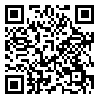Volume 22, Issue 4 (12-2019)
Hakim 2019, 22(4): 284-297 |
Back to browse issues page
Download citation:
BibTeX | RIS | EndNote | Medlars | ProCite | Reference Manager | RefWorks
Send citation to:



BibTeX | RIS | EndNote | Medlars | ProCite | Reference Manager | RefWorks
Send citation to:
mosadeghrad A, ehteshami F. Explaining and Predicting Donors’ Participation Behavior in Iranian Health System. Hakim 2019; 22 (4) :284-297
URL: http://hakim.tums.ac.ir/article-1-1843-en.html
URL: http://hakim.tums.ac.ir/article-1-1843-en.html
Abstract: (4253 Views)
Explaining and Predicting Donors’ Participation Behavior in Iranian Health System
Ali Mohammad Mosadeghrad1, Fatemeh Ehteshami2*
1Department of Health Management and Economics, Health Information Management Research Center, School of Public Health, Tehran University of Medical Sciences, Tehran, Iran
2Department of Health Management and Economics, School of Public Health,
Tehran University of Medical Sciences, Tehran, Iran
Abstract
Introduction: Donors can contribute to the funding, resource generation, and provision of healthcare services in the Iran health system. Several factors can influence the donors’ contribution to the health system. This study aimed to explain and predict the donors’ participation in the Iran health system.
Methods: A qualitative and inductive study was performed using semi-structured interviews with 38 donors and 26 policymakers and managers in the Social Affairs Department of the Ministry of Health and the Universities of Medical Sciences in 2018. The interviewees were recruited using a purposeful and snowball method. The thematic content analysis method was used for data analysis. All major ethical considerations were observed in this research.
Results: Healthcare donors followed a purposeful and planned behavior for contributing to the health system. Nine factors can influence a donor’s charitable behavior in the health system, including goal, intention, attitude, norms (ethical, descriptive, and subjective norms), personal characteristics, background knowledge, experience, past behavior, and control of perceived behavior. The donors’ participation in the health system is a function of their goals, intentions, attitudes, and their control of perceived behavior. The donors’ attitude is shaped by their characters, background knowledge, experience, past behavior, and ethical, descriptive, and subjective norms.
Conclusion: The purposeful and planned behavior model developed in this study guides healthcare managers and policymakers in explaining and predicting the donors’ charitable behavior in the health system.
Keywords: Purposeful and Planned Behavior Theory; Donors; Iranian Health System; Modelling
*Corresponding Author: Department of Health Management and Economics, School of Public Health, Tehran University of Medical Sciences, Tehran, Iran. Tel: +98-2181455832, Email: fateme.eht@gmail.com
Ali Mohammad Mosadeghrad1, Fatemeh Ehteshami2*
1Department of Health Management and Economics, Health Information Management Research Center, School of Public Health, Tehran University of Medical Sciences, Tehran, Iran
2Department of Health Management and Economics, School of Public Health,
Tehran University of Medical Sciences, Tehran, Iran
Abstract
Introduction: Donors can contribute to the funding, resource generation, and provision of healthcare services in the Iran health system. Several factors can influence the donors’ contribution to the health system. This study aimed to explain and predict the donors’ participation in the Iran health system.
Methods: A qualitative and inductive study was performed using semi-structured interviews with 38 donors and 26 policymakers and managers in the Social Affairs Department of the Ministry of Health and the Universities of Medical Sciences in 2018. The interviewees were recruited using a purposeful and snowball method. The thematic content analysis method was used for data analysis. All major ethical considerations were observed in this research.
Results: Healthcare donors followed a purposeful and planned behavior for contributing to the health system. Nine factors can influence a donor’s charitable behavior in the health system, including goal, intention, attitude, norms (ethical, descriptive, and subjective norms), personal characteristics, background knowledge, experience, past behavior, and control of perceived behavior. The donors’ participation in the health system is a function of their goals, intentions, attitudes, and their control of perceived behavior. The donors’ attitude is shaped by their characters, background knowledge, experience, past behavior, and ethical, descriptive, and subjective norms.
Conclusion: The purposeful and planned behavior model developed in this study guides healthcare managers and policymakers in explaining and predicting the donors’ charitable behavior in the health system.
Keywords: Purposeful and Planned Behavior Theory; Donors; Iranian Health System; Modelling
| Please cite this article as follows: Mosadeghrad AM, Ehteshami F. Explaining and predicting donors’ participation behavior in Iranian health system. Hakim Health Sys Res. 2019; 22(4): 284-297. |
*Corresponding Author: Department of Health Management and Economics, School of Public Health, Tehran University of Medical Sciences, Tehran, Iran. Tel: +98-2181455832, Email: fateme.eht@gmail.com
Type of Study: Original |
Subject:
General
Received: 2018/08/5 | Accepted: 2020/06/14 | Published: 2020/06/14
Received: 2018/08/5 | Accepted: 2020/06/14 | Published: 2020/06/14
| Rights and permissions | |
 |
This work is licensed under a Creative Commons Attribution-NonCommercial 4.0 International License. |





